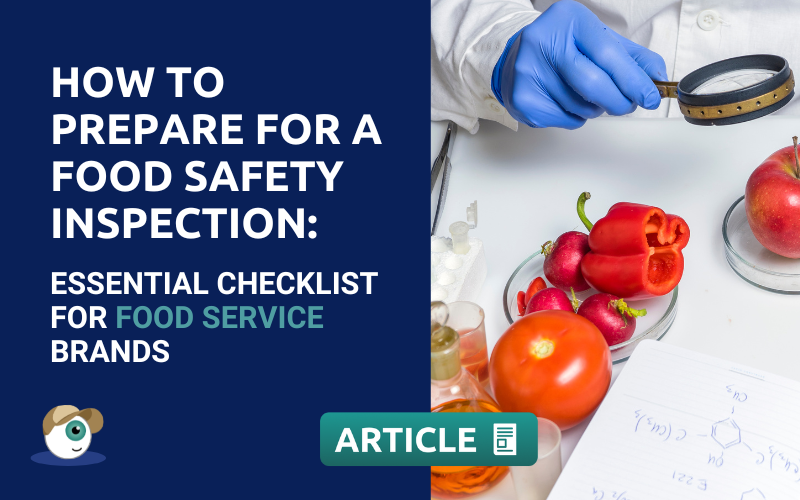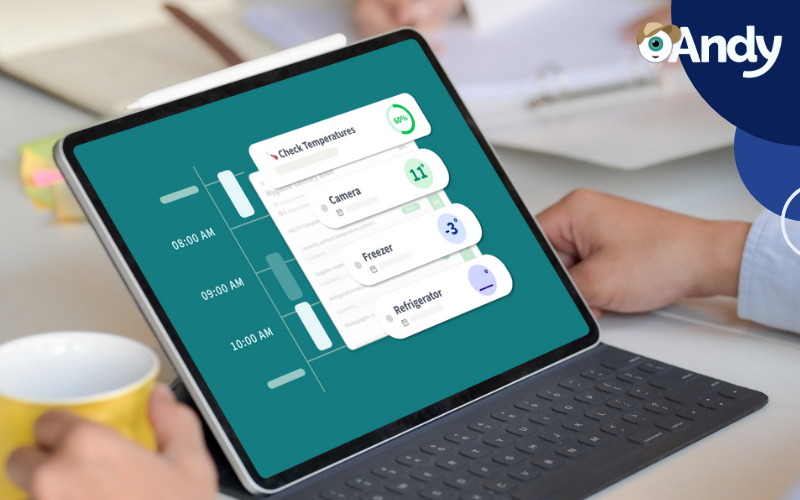How to Prepare for a Food Safety Inspection: Essential Checklist for Food Service

If you manage one or multiple food service or catering brands, you know that food safety control involves a large number of processes, records, and regulations that must be meticulously followed. From ingredient traceability to facility hygiene, every aspect is crucial to ensuring that a health inspection does not become a problem for your business.
To prevent penalties and, above all, ensure consumer safety, it is essential to always be prepared. If you’re wondering “How do I prepare for a food safety inspection?“, this checklist will help you ensure that you meet all the essential requirements.
Cómo me preparo para una inspección de inocuidad alimentaria
1. Documentation in order
One of the first things inspectors check in a food safety inspection is your documentation. Make sure you have:
✔️ Sanitary control records: Include temperature logs, cleaning schedules and equipment maintenance records.
✔️ Hazard Analysis and Critical Control Point (HACCP) Plan: Must be updated and in operation.
✔️ Supplier records and traceability documentation to ensure food safety and origin.
✔️ Employee food safety training certificates: All staff must have received food safety training.
✔️ Technical datasheets and product labeling with clear information on allergens and composition.
Tip: Digitising these records with a tool such as Andy facilitates quick access to documentation and prevents loss of information.
2. Cleaning and disinfection: keys to passing the inspection
Hygiene is a fundamental pillar in any food safety audit. Make sure that:
✔️ Cleaning protocols are well-defined and followed daily.
✔️ Work surfaces and utensils are properly sanitised after each use.
✔️ The cleaning products used are suitable for the food industry and are well stored.
✔️ Cleaning records are up to date and accessible.
Tip: Implement daily checklists and internal audits to ensure compliance.
3. Temperature control and safe storage
Proper temperature control prevents the proliferation of dangerous microorganisms. Make sure that:
✔️ Cold rooms and freezers maintain the correct temperatures (Refrigeration: ≤ 5°C, Freezing: ≤ -18°C).
✔️ Perishable foods do not exceed the recommended exposure times.
✔️ Thermometers are calibrated and in use to verify cooking, cooling and storage temperatures.
✔️ The stock rotation system (FIFO – First In, First Out) is correctly applied.
✔️ Chemicals are not stored with food.
Tip: Using automated temperature sensors and digital alerts helps prevent storage failures.
4. Traceability and allergen management
Traceability allows you to respond quickly to product recalls or incidents. To be prepared:
✔️ Verify that all ingredients are correctly labeled with expiration dates and origin.
✔️ Make sure there is a detailed record of the path of each food item from entry to use.
✔️ Correctly identify and communicate allergens on menus and technical sheets.
✔️ Prevent cross-contamination by storing allergens separately and applying specific protocols.
Tip: Digitising traceability management allows you to quickly consult any information required by the inspector.
5. Staff training and best practices
Teams must be well prepared and knowledgeable about sanitary regulations. Make sure that:
✔️ All employees have received training in hygiene and food handling.
✔️ Good hand washing practices and the use of appropriate work clothes are applied .
✔️ The kitchen team follows safety protocols at every stage of production.
✔️ There is a clear procedure for action in case of contamination or health incidents.
Tip: Update team training periodically with refresher sessions and internal audits.
Prepare for a stress-free food safety inspection with Andy
Meeting all of these requirements can be a challenge, but technology makes preparing for food safety inspections a lot easier.

With Andy, you can:
- Keep all records organised in one unified platform.
- Receive automatic alerts for deviations in temperature, cleanliness or traceability.
- Digitise sanitary control processes, reducing human errors.
- Ensure that your teams comply with all protocols without any additional effort.
- And much more!
Don’t let an inspection take you by surprise. Find out how Andy can help you keep your brand always ready.


